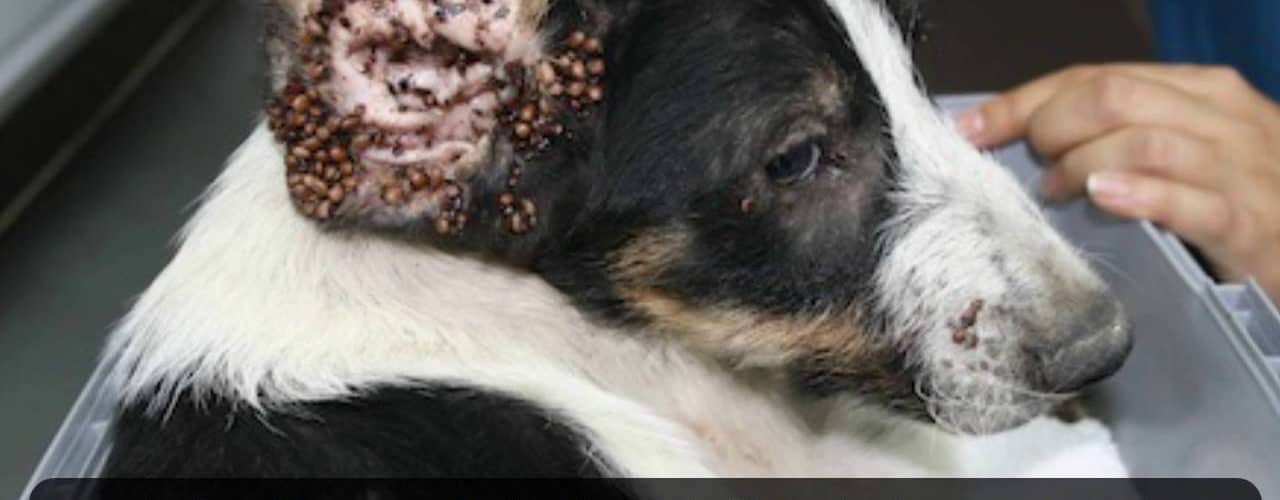We love our pets, and we invite them in to our homes and our families. But no one loves the stowaways that pets can sometimes bring with them. Dealing with ticks isn’t pleasant but it is simple and very important for the health of your human and animal families.
To get rid of ticks, it’s important to know your enemy. Ticks, like mites, are parasitic arachnids. They feed off the blood of mammals, including dogs, cats, mice, and deer. Ticks complete their life cycle by taking a blood meal from their host and then moving on to reproduce and lay eggs. In the larval stage, they attach themselves by inserting their mouthparts on to an animal, and then feeding off its blood. The tick then grows much larger before finally detaching as an adult. These habits make ticks dangerous, because they can transport blood-borne diseases and infections from host to host. Ticks can transmit lyme disease, Rocky Mountain fever, and a number of other unfortunate and serious conditions for humans and animals alike.
Ticks hide in tall grasses, shrubs and bushes. Part of keeping ticks off your pets includes mowing grass and removing dead leaves and litter. You may want to consider products that are applied to a dog’s skin to kill and repel ticks and fleas. Some evidence indicates eucalyptus oil, in small diluted applications to the coat, may repel ticks as well. You should consult with a vet before starting any tick prevention regimen.
The most important part of keeping ticks away is frequently inspecting your dog for ticks, and promptly removing any that you find. If you suspect a tick problem, you should check your dog at least once daily. If you’re hiking or camping, you may want to check more often. It’s easiest to remove ticks before they begin to feed, and some ticks can complete a blood meal in a few hours. Larval ticks may be very small, roughly the size of a pinhead. Adult ticks can be much larger, around the size of a pea. You might see a tick (usually dark or reddish-brown or black) or feel one as your are petting your dog. Check the neck and ears, between toes, and around the tail.
Once you find a tick, removing it is simple. CDC Tick Removal does not advise using a match, petroleum jelly, nail polish, or anything else in an attempt to make the tick “release.” These methods may increase the chance of infection from a tick bite.
Instead, begin by gathering your supplies. You’ll need tweezers, a small jar of alcohol, and a clean disinfecting swab and antibiotic ointment. You might designate one pair of tweezers for your dog to prevent cross contamination. A dog biscuit in your pocket will persuade your canine companion to cooperate.
Ask your dog to sit or lay down. When the dog is calm, gently pull back the fur from the tick. Never use your hands to remove a tick. Remove the tick by tweezing it away from as close to the skin as possible. Aim to remove the tick by the mouthparts, but don’t worry too much if the mouth detaches. Be careful not to apply pressure to the body of the tick. Dispose of it by putting it in alcohol or soapy water. Saving the tick would help your veterinarian if the bite becomes infected.
Swab the bite with disinfectant, and apply antibiotic ointment. Praise your dog for cooperating–it will make things easier next time. Wash your hands and tweezers. Monitor the bite closely for redness or swelling that lasts more than a day or two, and see the vet if the bite doesn’t heal up. Dogs with existing health problems or a serious tick problem also need to see the vet.
Knowing how to remove a tick will help you deal safely with one of the most common dog issues, and keep your pets and family healthy and happy!



